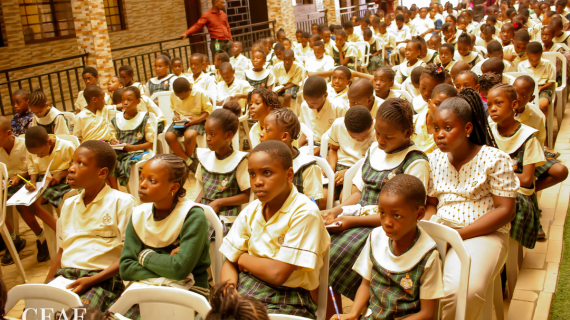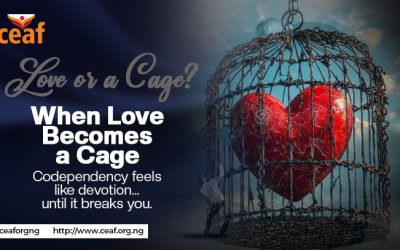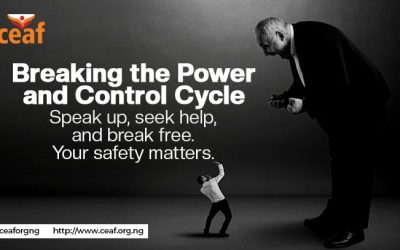Our Updates
Opinions, Blog & News!
Breaking the Silence: CEAF’s Stand Against Abuse, Child Marriage & Sexual Violence”
In every corner of our society, silence is doing more damage than we realize. Behind closed doors, too many women, children, and girls are living in fear—trapped by abuse, threatened by child marriage, and scarred by sexual assault. These are not just private pains;...
When Silence Kills: The Death of Shimite Bello
The tragic death of Shimite Bello, Special Adviser to the Delta State Governor, has once again exposed the grim truth about domestic abuse—no status, title, or public image can shield a victim from its horrors. The news of her passing has not only shocked the public...
When Love Becomes a Cage
Not all toxic relationships scream through bruises or break things in rage. Some whisper softly through daily sacrifices and emotional shackles disguised as love. Codependency is one of those quiet killers—emotionally draining, mentally suffocating, and soul-crushing....
Breaking the Power and Control Cycle”
In abusive relationships, the power and control dynamic is a destructive force that can manifest in different forms: emotional, physical, financial, and sexual abuse. This dynamic thrives on one partner’s need to dominate and manipulate the other, often using subtle...
Love Bombing: When Affection Becomes a Weapon
In a world where love is often idealized as grand gestures and sweeping romance, it’s easy to mistake manipulation for passion. Love bombing—an insidious form of emotional abuse—preys on this perception, disguising control as devotion. It is not love; it is a strategy...
Silencing Women: Nigeria’s Leadership Shame
In a nation where leadership should embody decorum, respect, and intellectual engagement, a Senate hearing quickly turned into a disturbing display of hostility, intimidation, and outright disrespect. A viral video captures a shameful moment—Senator Onyekachi...
Not Entertainment—But Abuse And Child Exploitation!
Abuse And Child Exploitation! A deeply disturbing video has surfaced online, exposing the growing moral decay in our society. It shows a young girl, barely past childhood, being sexualized on stage. A boy, following a scripted act, performs an inappropriate gesture...
Breaking the Chains of Abuse
Abuse thrives in silence. Too often, victims suffer alone, believing they have no way out. Society’s whispers of shame and fear of retaliation keep them trapped in cycles of pain. But the truth is—speaking out is the first step to freedom. This story sheds light on...
Women Deserve Appreciation
Gratitude, joy, and strength—women thrive when appreciated! Let’s keep celebrating and uplifting them every day.
Our Campaigns
Join the Movement!
Your support can be the catalyst for transformative change! 💥 Every donation, every volunteer hour, and every shared message brings us closer to our goal. Will you:
✦ Donate today and fuel our mission? ✦ Volunteer your time and talents to drive impact? ✦ Share our story and inspire others to join the movement?
Together, we can create a ripple effect of kindness and compassion that resonates far and wide! 💖 Take action now and be part of something amazing!💙

School Outreach Program
This initiatives is designed to inform the Student about abuse, support educational development, and provide resources for students, teachers and parents.

Patient and Family Support
To be everywhere – on websites, media, t-shirts, billboards, post cards and other public spaces as a sign of th

Safe House for Victims of Domestics Violence and Sexual Assaults
Creating Safe House for Victims of domestics violence and sexual assaults since 2009.

Public Awareness Campaigns
Our Public awareness campaigns on domestic violence educate community members about the prevalence of abuse

Free Legal Guidance
Free Legal guidance through our partnership with Headfort Foundation for Justice and others organizations that provides legal services.






